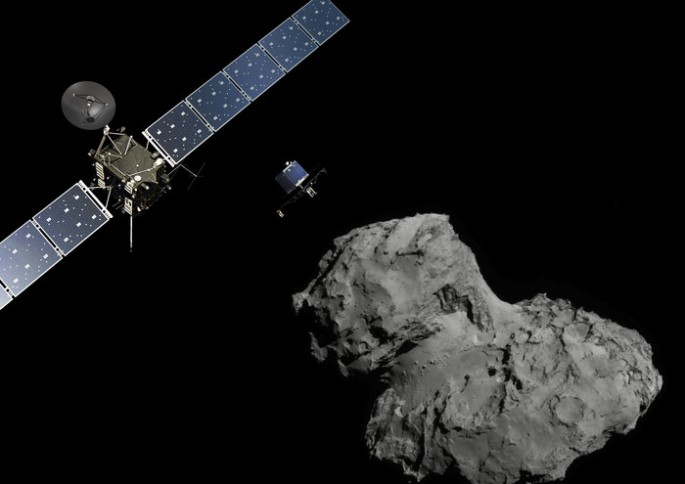The European Space Agency announced this Tuesday that its Rosetta mission will be extended for another nine months, until the end of September 2016 in order to obtain more scientific information from comet 67P/Churyumove-Gerasimenko.
Scientists also reveal that by next year, the Rosetta spacecraft will land on the surface of the comet, to join its lander, Philae.
The Rosetta mission was launched in 2004 where it rendezvoused with the comet 67P last August 2014, however, the mission was supposed to end by December 2015. In a surprising turn of events, the ESA's Science Programme Committee gave the final go signal to continue the mission for the next nine months where this extension will help scientists to further understand how comets became the remnants of an early solar system.
According to ESA's Rosetta Project Scientist, Matt Taylor, this extended mission can enable the team to monitor the decline in the comet's overall activity as it moves again away from the sun during the course of its orbit with the opportunity to fly closer to the comet's surface to collect more data.
Taylor adds that by comparing "before" and "after" data that was obtained from comet 67P, this will shed new light on the comet's evolution during its lifetime.
The comet is now zooming closer to the sun, making its closest approach on August 13. Scientists are now preparing for this event as the Rosetta spacecraft will now be expected to swoop down to the comet's surface to reach the core for a detailed scientific survey of the comet's "summer" period when it arrived at its closest approach to the sun.
If Rosetta closes in on the comet near its surface, this would mean that it could now locate the Philae lander which is currently lost.
Rosetta deployed the Philae lander on November last year where it experienced a hard touchdown, bumping across the surface of the comet. After 57 hours prior to its landing, Philae stopped its operations and finally fell into hibernation for many months, where it eventually made a surprising contact with Rosetta a few weeks ago.
ESA adds that this extended Rosetta mission will definitely add some riskier investigations that will include flybys across the night side of the comet in order to observe plasma, dust and gas activity across this region including obtaining samples that are close to the core of the comet.



























